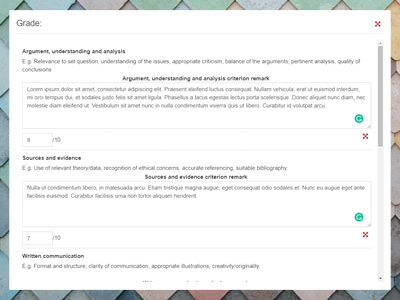By Jonny Evans, Mathematical Sciences, Faculty of Science and Technology
Background
It can be hard to give feedback when there is lack of face-to-face contact with students. Sometimes it's hard to express your criticisms in writing or to give a sense of which comments are important and which are less consequential (it's all just so much red ink). I wanted a more personalised way of giving feedback, which would give the students a better sense of how to improve, and a sense that their lecturer was actually engaging with their work.
I saw Bela Chatterjee's Sharing Practice talk in April 2020, in which she discussed her experiences of using individualised feedback videos. I thought that this might be a good solution. My class was small (only 24 students) so I thought it might be manageable. Moreover, my class was 100% coursework-based assessment, so feedback is all the more important to help them improve in time for it to make a difference to their written coursework.
What did you do?
I recorded individual videos using Teams, screen sharing the students' work and talking about what they did well/could have improved.
Each feedback video was 5-10 minutes long. In total, marking and making the video for each student only took 20 minutes. Changing permissions to make the videos individually viewable by each student was a bit of a faff, but still manageable.
I made sure that my mark-scheme focused on overall properties of their solutions: instead of giving points for mentioning particular ingredients of the solution, I gave overall marks for clarity, accuracy and completeness of the solution. This meant it was easy to come up with a numerical mark, and focus my feedback on the important details and aspects of their writing instead of fiddling around assigning lots of part-marks.
How did you feel about it?
I enjoyed marking this way a lot: it felt more like you were having a discussion with the student instead of scrawling comments they might never read. I also found it much easier to express my qualms through this medium. In particular, I found subtle points of how to phrase mathematical arguments easier to express verbally than in writing.
What did the students think?
Student feedback about this mechanism was overwhelmingly positive: this module received a 5/5 specifically in the "Feedback" category on LUMES, and student comments included several along the lines of "really liked the video feedback, made me engage with what I had got wrong significantly more". The students' final projects for this module have been very high quality, so it seems like they did take the feedback on board.







